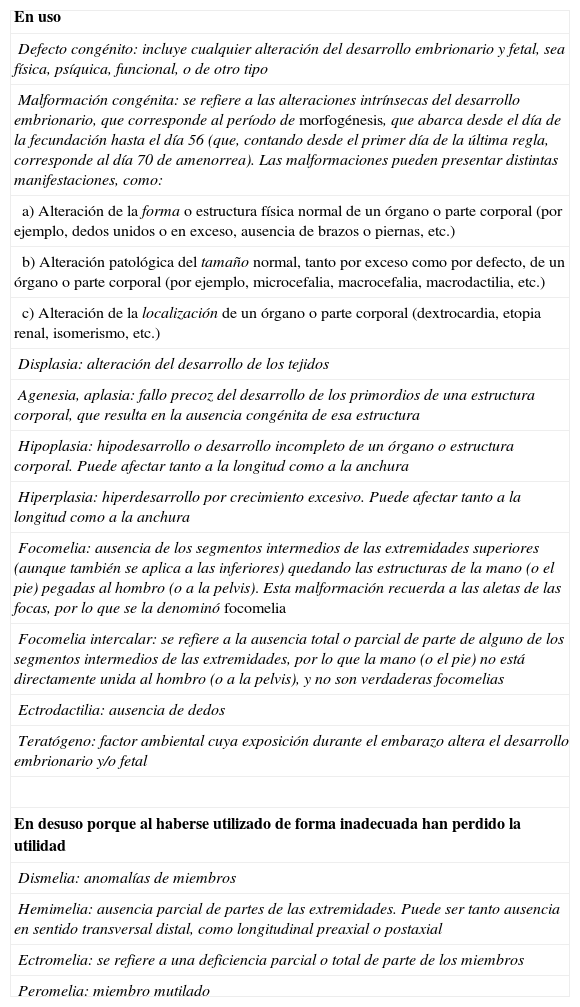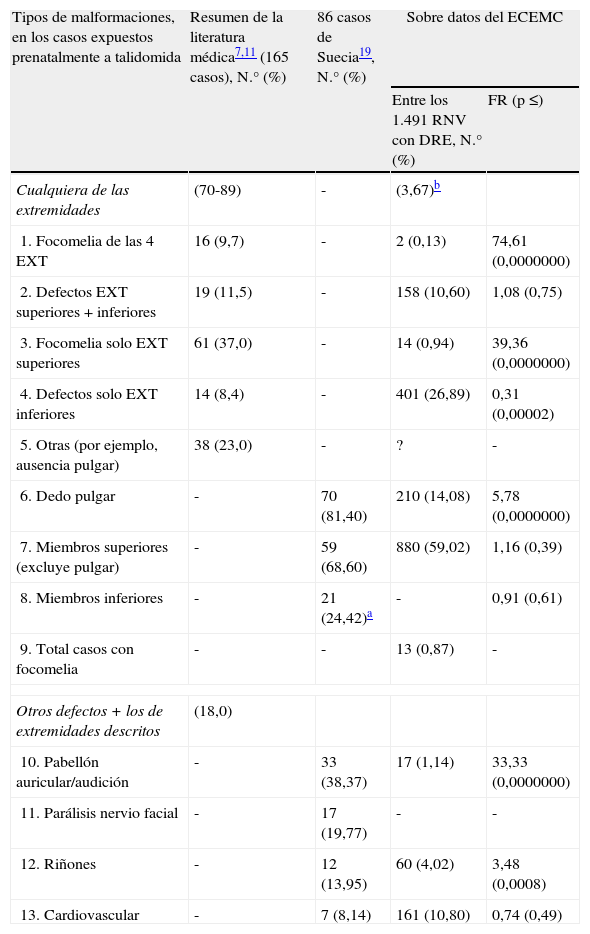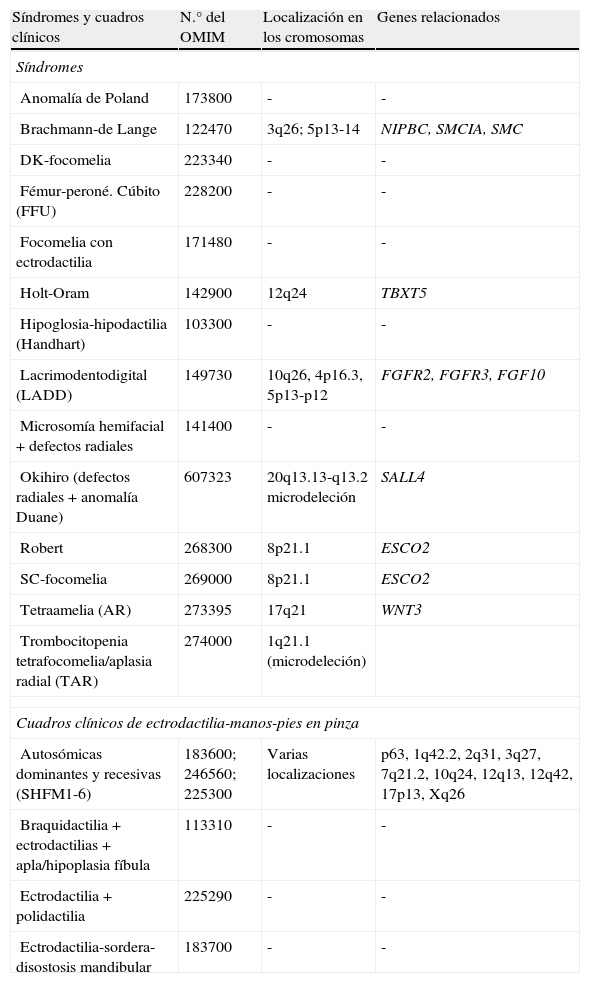Este año es el 50° aniversario del descubrimiento del efecto teratogénico de la talidomida, y aunque se conocen otros fármacos teratogénicos, la talidomida sigue preocupando a profesionales sanitarios y población general. Sin embargo, y junto con la tragedia humana que causó, ese descubrimiento supuso también el inicio de la investigación sobre las malformaciones congénitas y sus causas. Los objetivos son exponer lo que fue el efecto real de la talidomida y los momentos del embarazo en los que supone un riesgo, así como las consecuencias que tuvo su descubrimiento. Además, se realiza por primera vez un análisis para determinar los tipos de malformaciones que realmente produjo la talidomida. Para ello, se comparan las proporciones de 13 grupos de malformaciones de extremidades observadas en las series de niños expuestos prenatalmente a talidomida de la literatura médica, frente a las de esos mismos 13 grupos en los 1.491 niños recién nacidos con malformaciones de extremidades del registro del ECEMC (Estudio Colaborativo Español de Malformaciones Congénitas) no expuestos al fármaco. Los resultados muestran que los defectos, y su forma de presentación más característica de la talidomida (focomelia, ausencia/hipoplasia del pulgar), son significativamente más frecuentes entre los casos de niños expuestos de la literatura médica que entre los del ECEMC. Por el contrario, la afectación sólo de los miembros inferiores es 3 veces menos frecuente en los niños expuestos a talidomida que en no expuestos del ECEMC. Otros grupos de defectos muestran la misma frecuencia en todas las series comparadas, lo que documenta que, como para todos los teratógenos que hoy se conocen, no en todos los niños con malformaciones expuestos a talidomida, estas fueron debidas al efecto del fármaco. Por tanto, si una mujer embarazada utiliza un fármaco de riesgo para el desarrollo embrionario, no necesariamente el hijo tendrá malformaciones. Finalmente, se muestra la gran paradoja de este «temido» fármaco, que causó un drama humano produciendo malformaciones en casi 10.000 niños y que, por otra parte, ha supuesto una formidable contribución al desarrollo del conocimiento científico y terapéutico.
This year is the 50th anniversary of the discovery that the drug thalidomide causes birth defects and should therefore be considered as a teratogen. However, despite the existence of several other drugs that are also human teratogens, thalidomide continues to cause concern among health professionals as well as the general population. The objectives of this article are to make a short historical review of the discovery that this drug severely alters the embryo development, the critical period of gestation and the identification of the real effect of thalidomide. For the first time an analysis is provided to identify the type of malformations for which thalidomide really increases the risk. The proportions of the different types of malformations groups from the series of patients considered to be affected by thalidomide from the literature were compared with the proportions of the same malformations groups in non-exposed infants from the Spanish Collaborative Study of Congenital Malformation (ECEMC). The aim of the analysis was to calculate the relative frequencies of 13 groups of malformations observed in series of patients exposed to thalidomide, by comparison with the same groups of defects in 1,491 patients with limb malformations from the ECEMC consecutive newborn infants, non-exposed to thalidomide. The results showed that the groups with the most classical limb malformations attributed to thalidomide (phocomelia, thumb absence/hypoplasia) had a significantly very higher frequency in exposed cases than in the ECEMC's cases. However, cases presenting with only lower limb malformations were 3 times less frequent in thalidomide cases than in those of ECEMC. Finally, other groups presented the same frequency as those observed in the ECEMC's cases. The results of the 2 last groups, strongly suggests that they were not due to the effect of thalidomide.
In addition to the short historical review of the teratogenicity risk of thalidomide, and their new therapeutic properties, it is documented that, as it happens with all other currently known human teratogens, not all malformations observed in infants prenatally exposed to thalidomide were caused by this drug. Finally, it is discussed the paradox that the «feared» thalidomide drug causing a great human drama affecting about 10,000 infants has led to a formidable contribution to the scientific knowledge, and large range of therapeutic applications.
Artículo
Comprando el artículo el PDF del mismo podrá ser descargado
Precio 19,34 €
Comprar ahora











